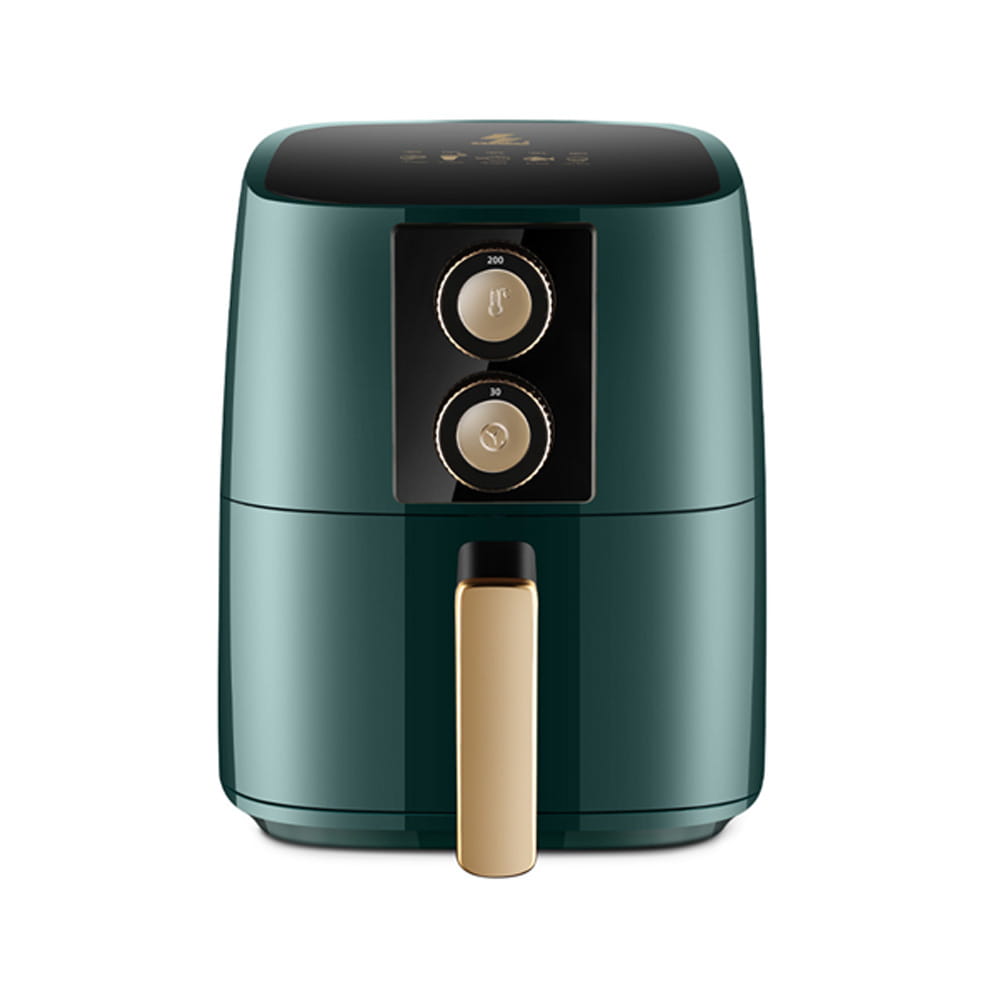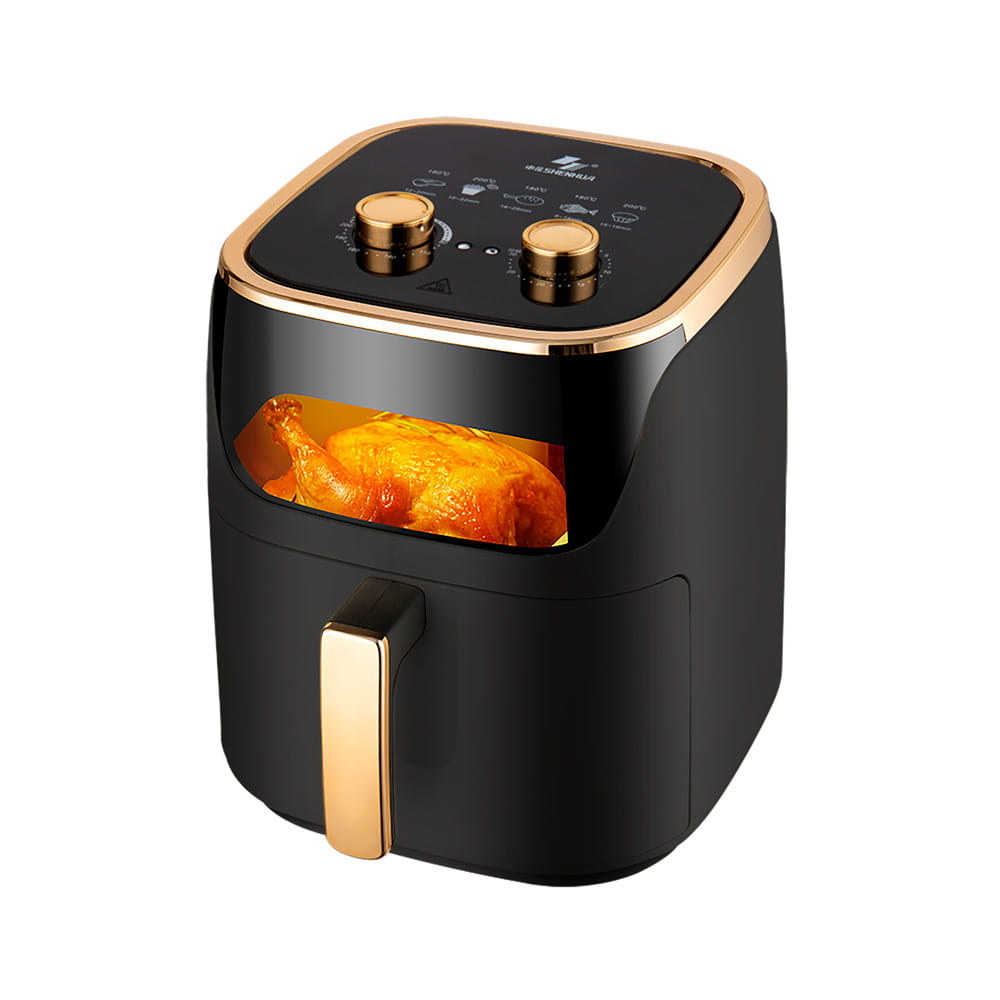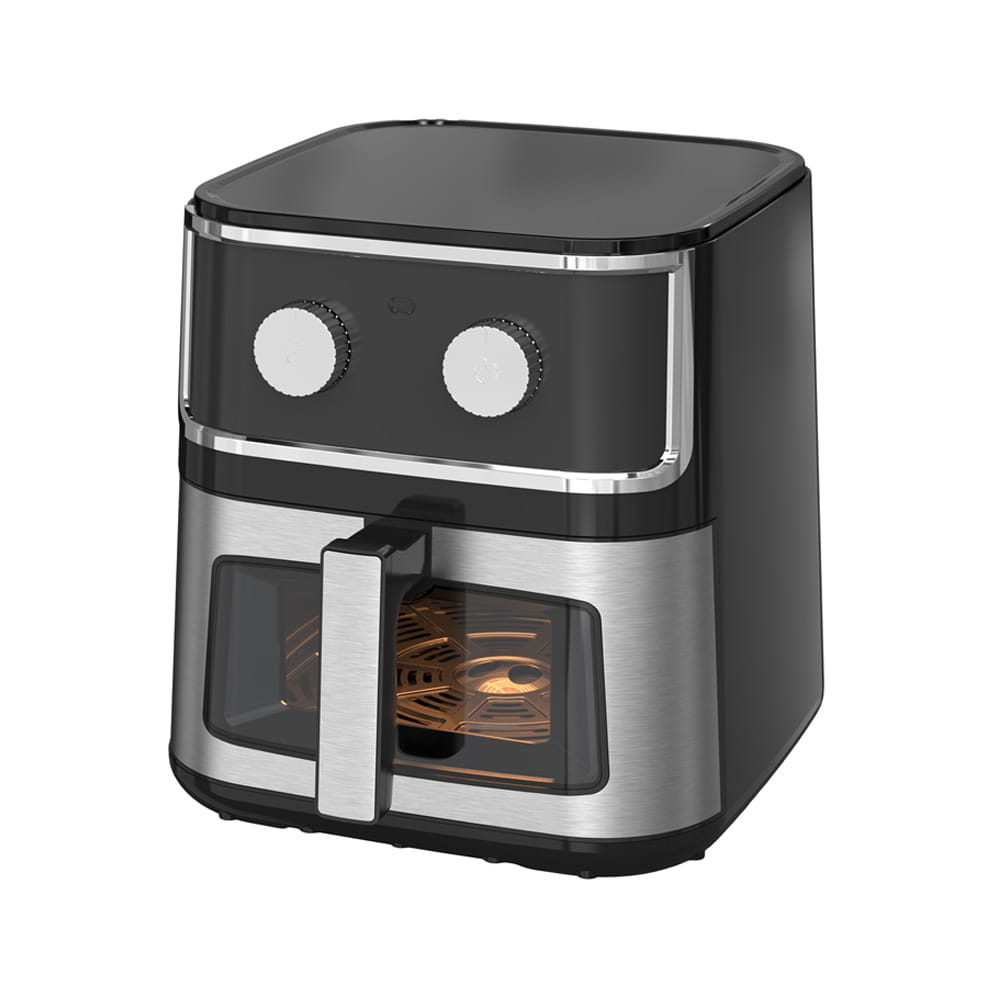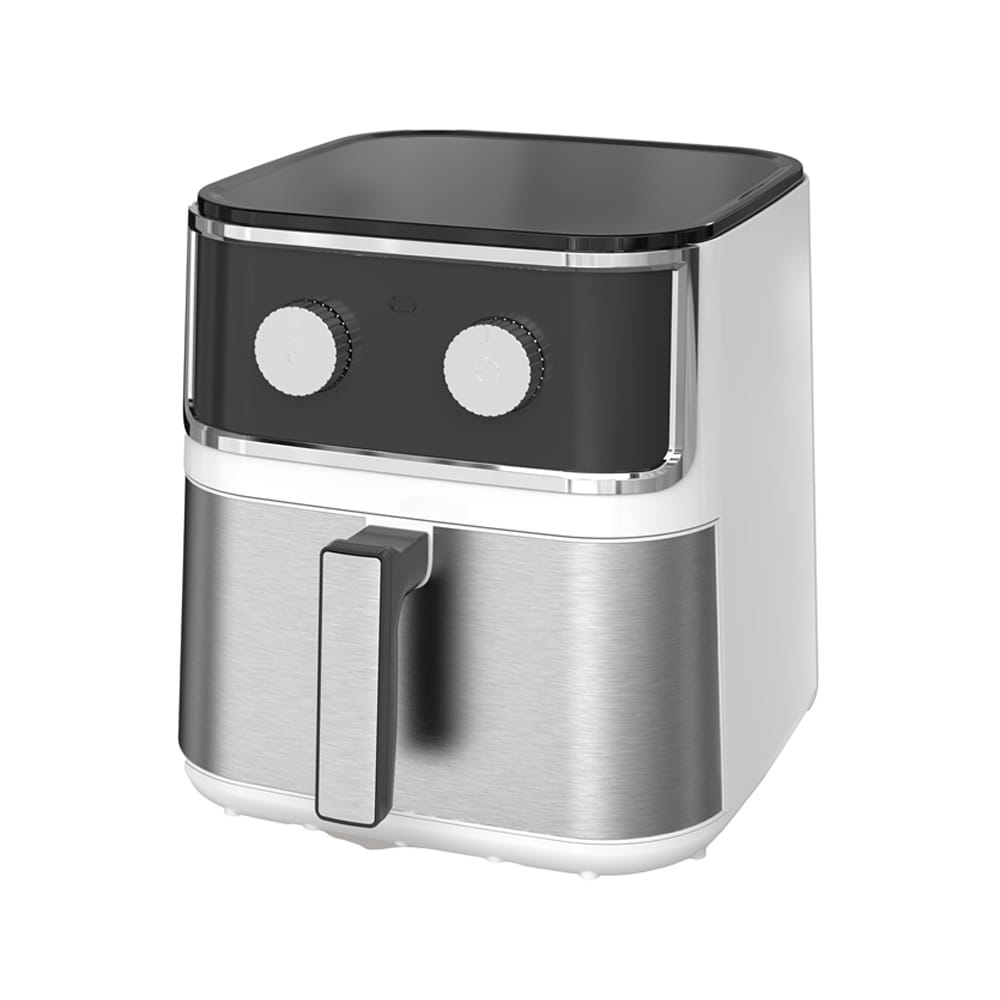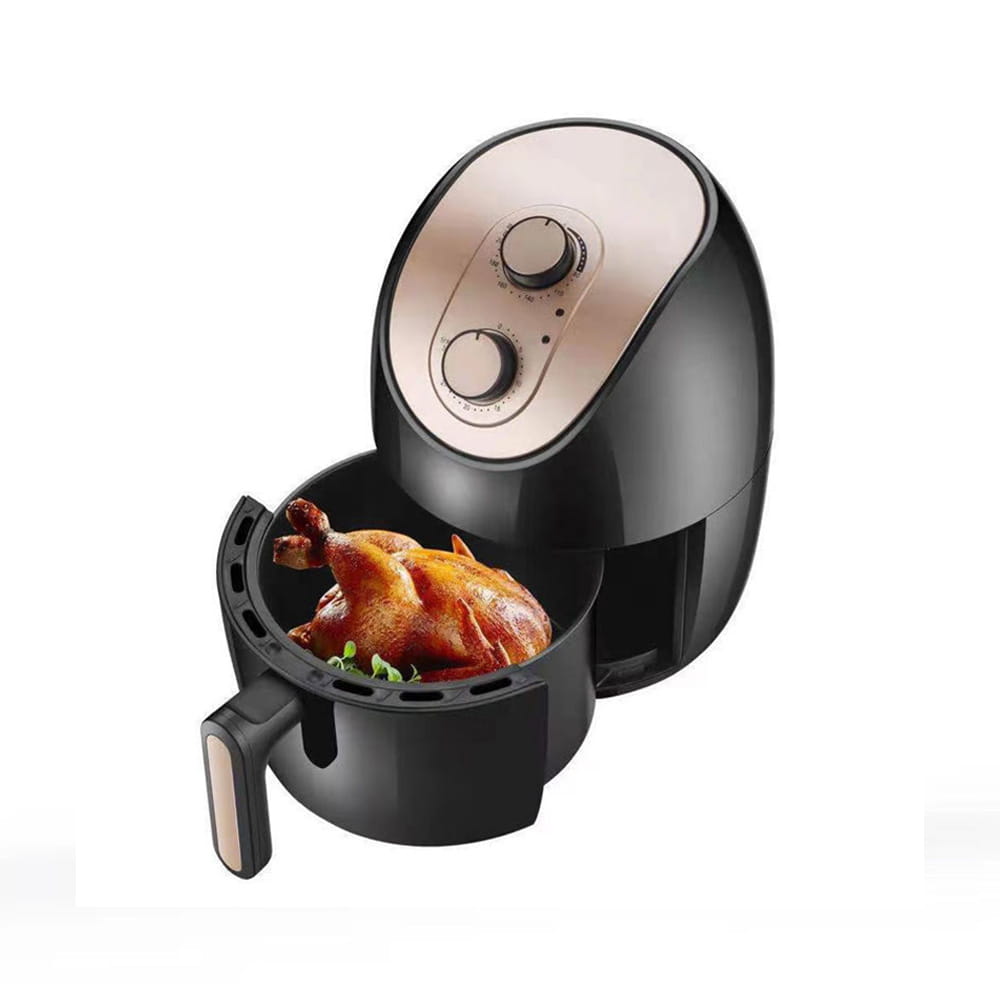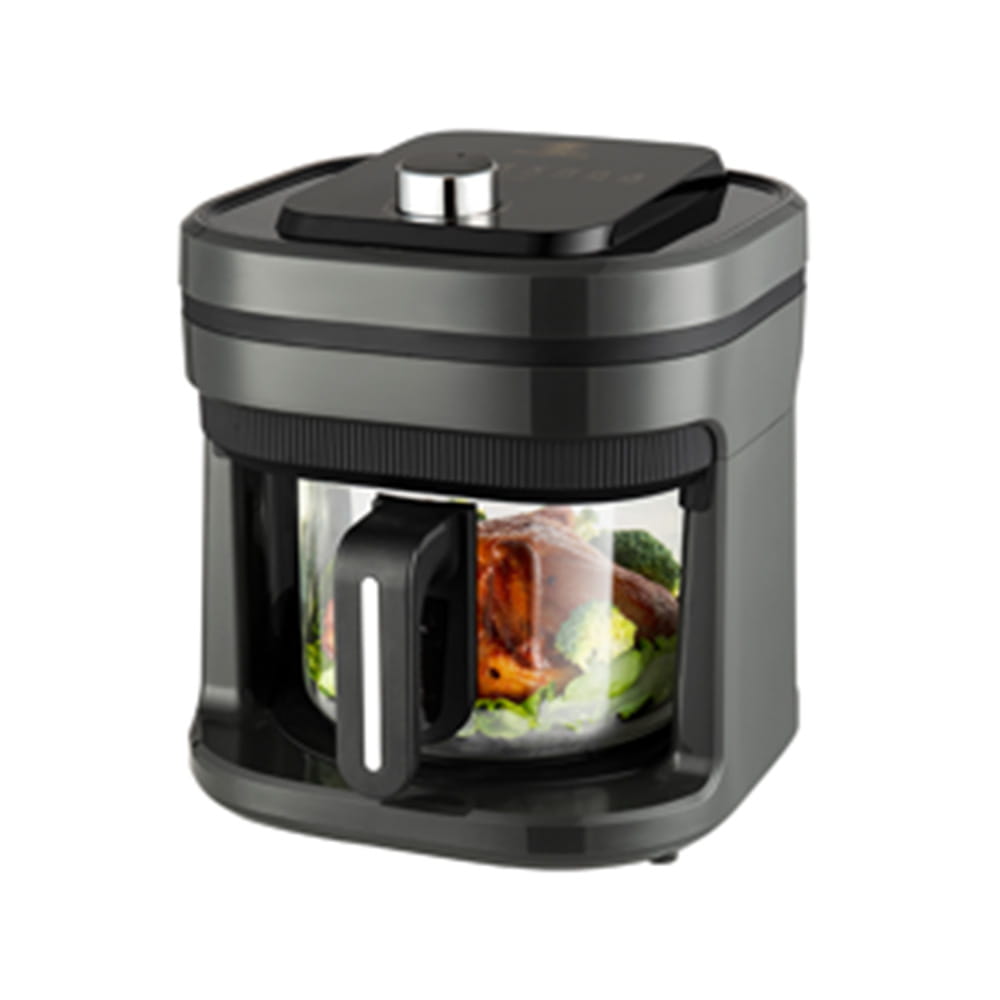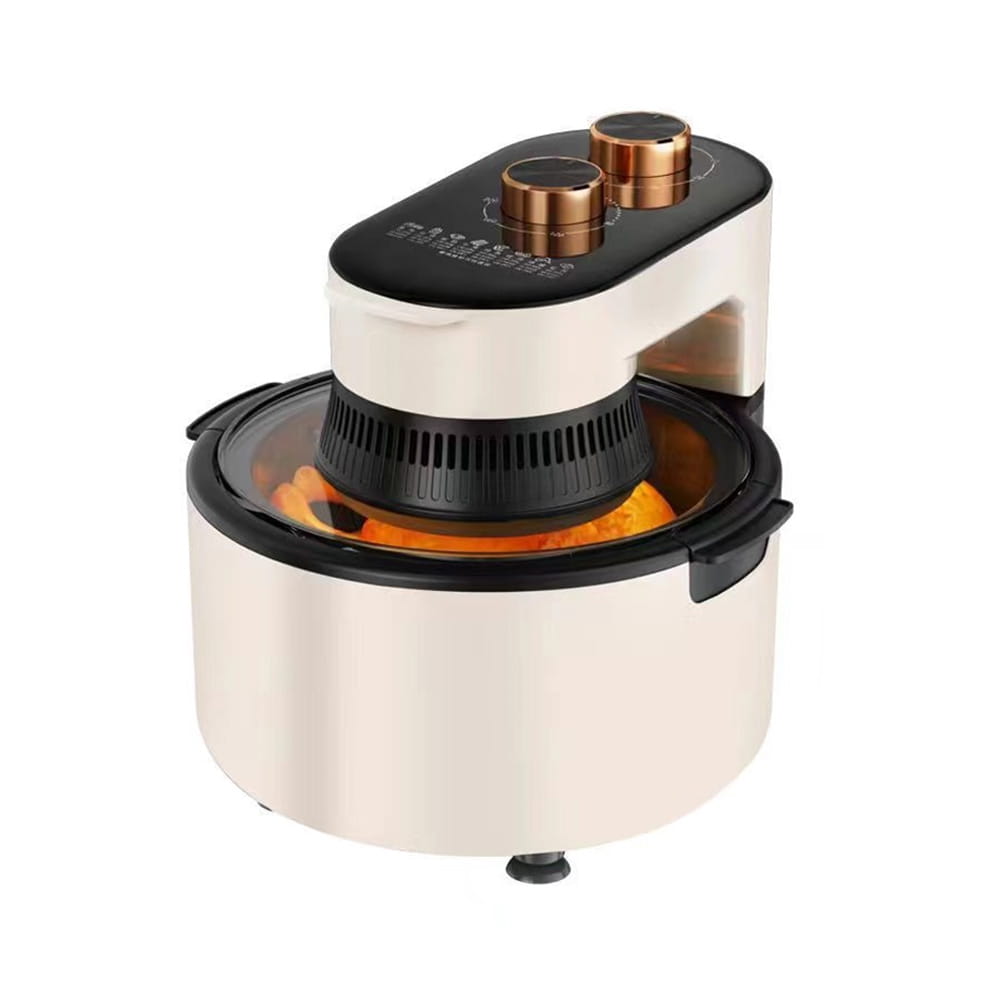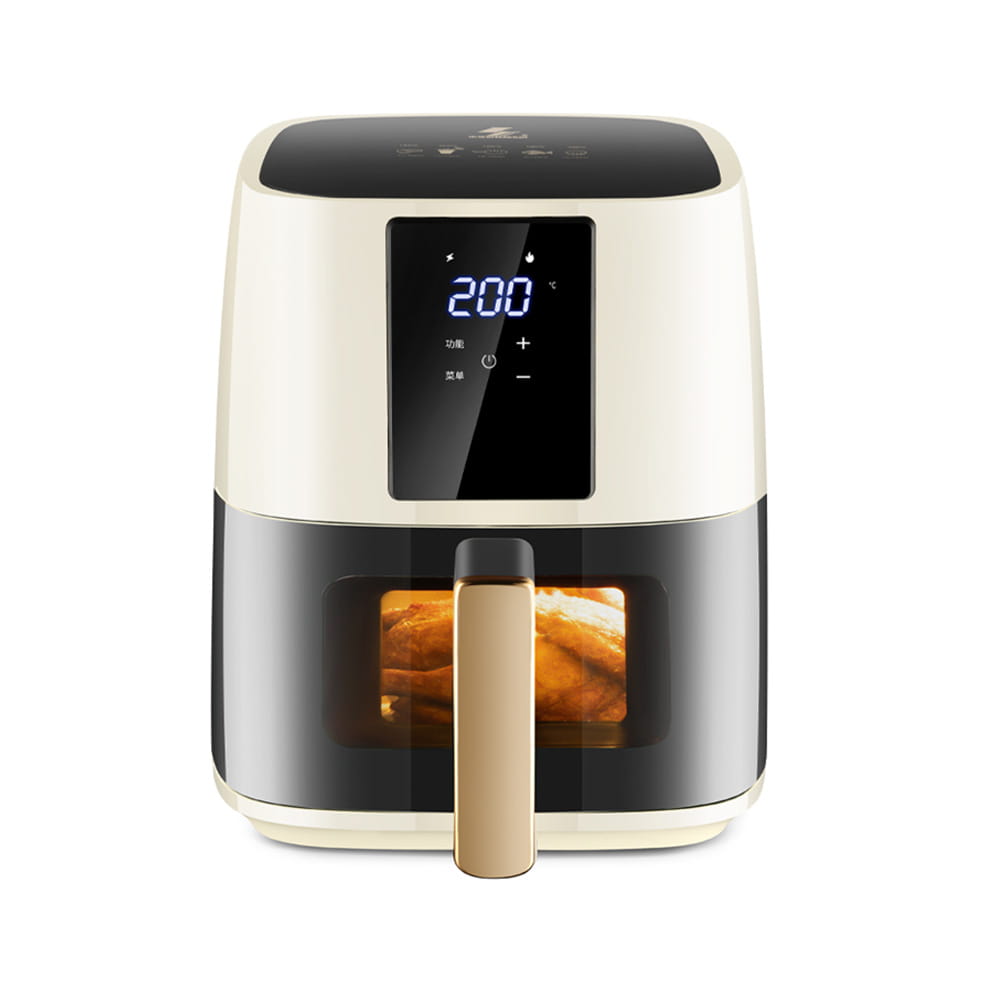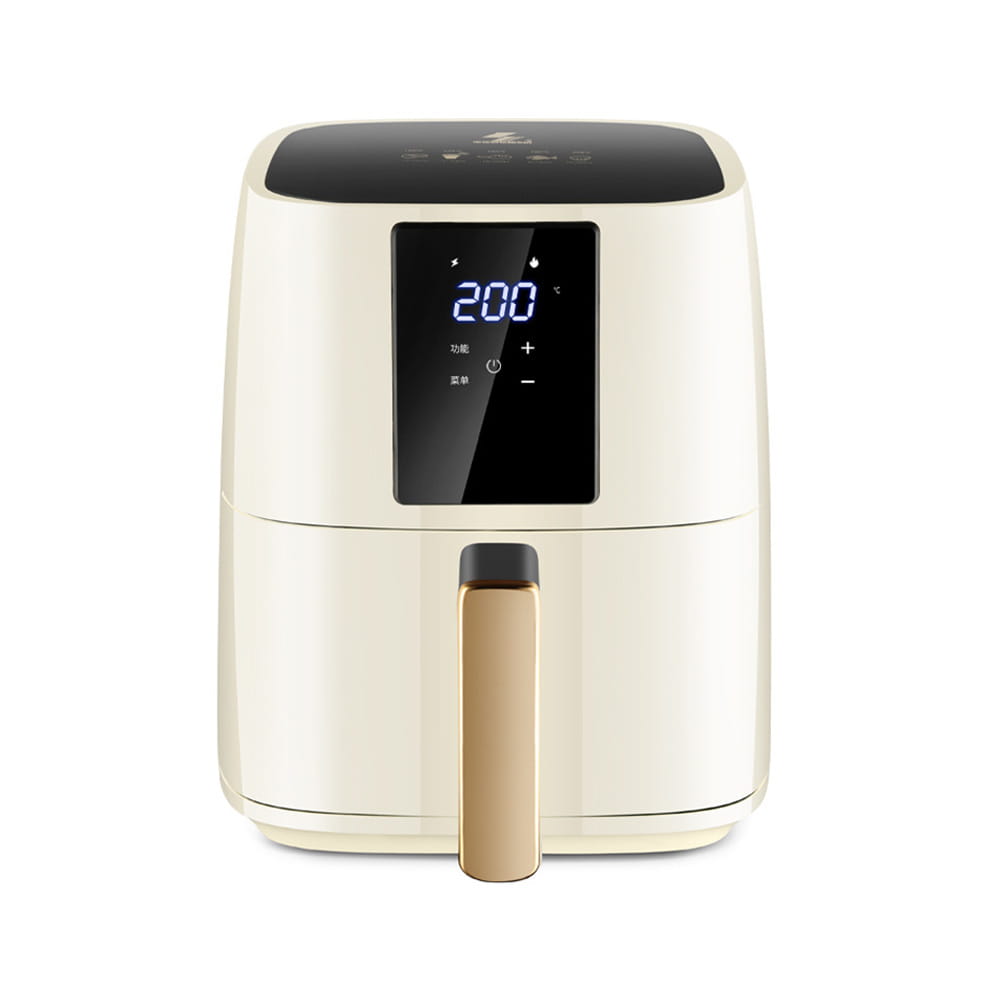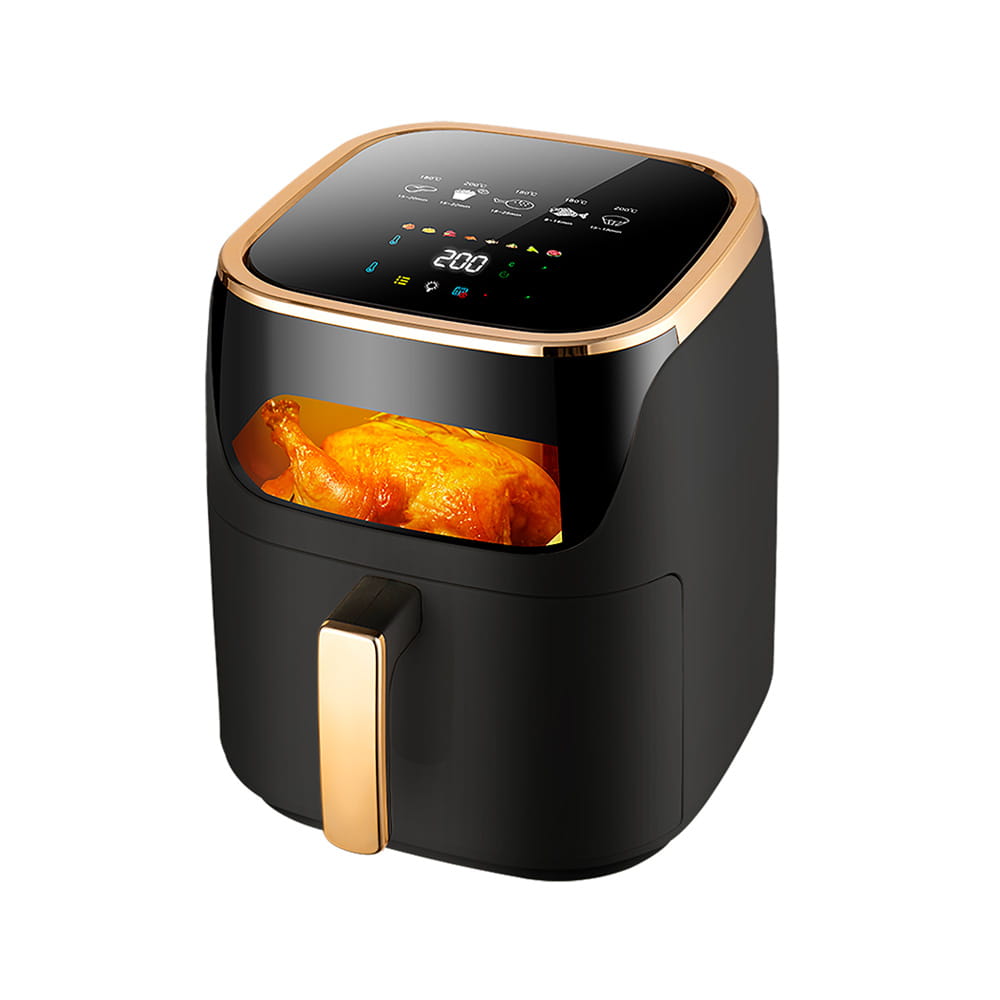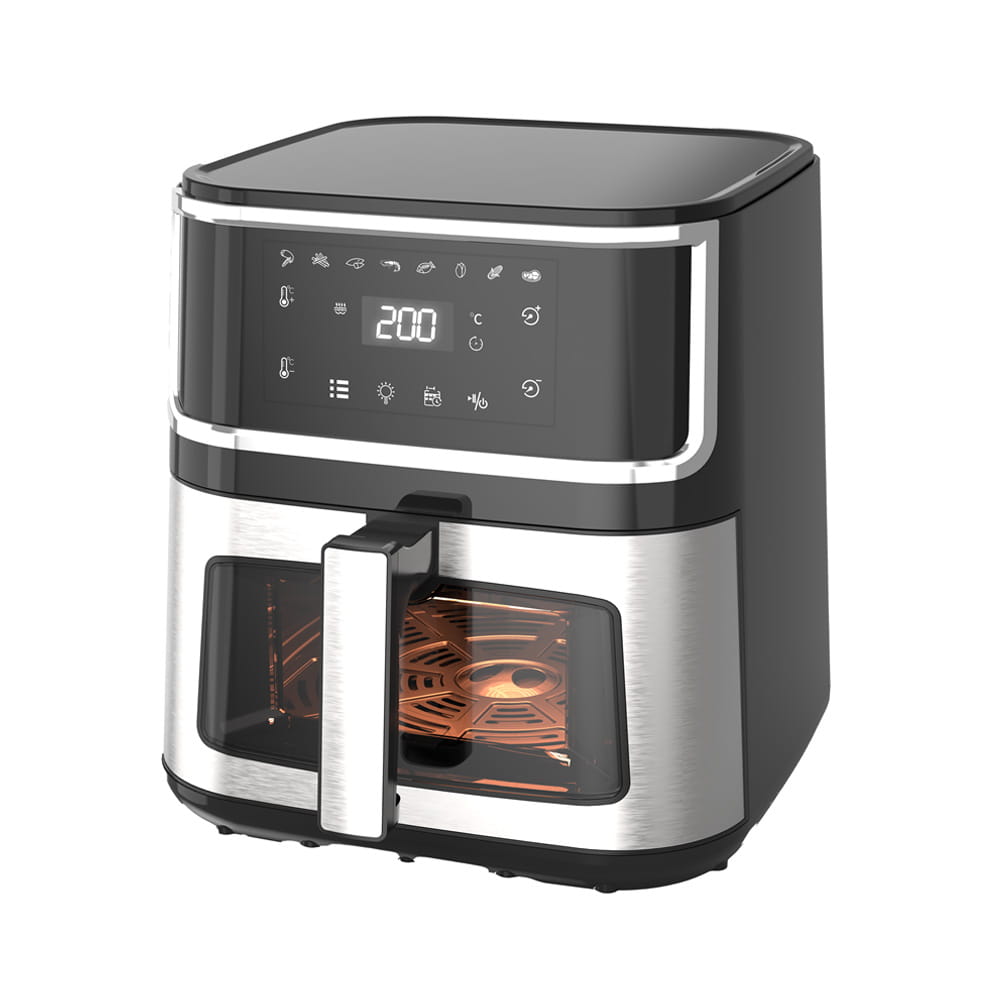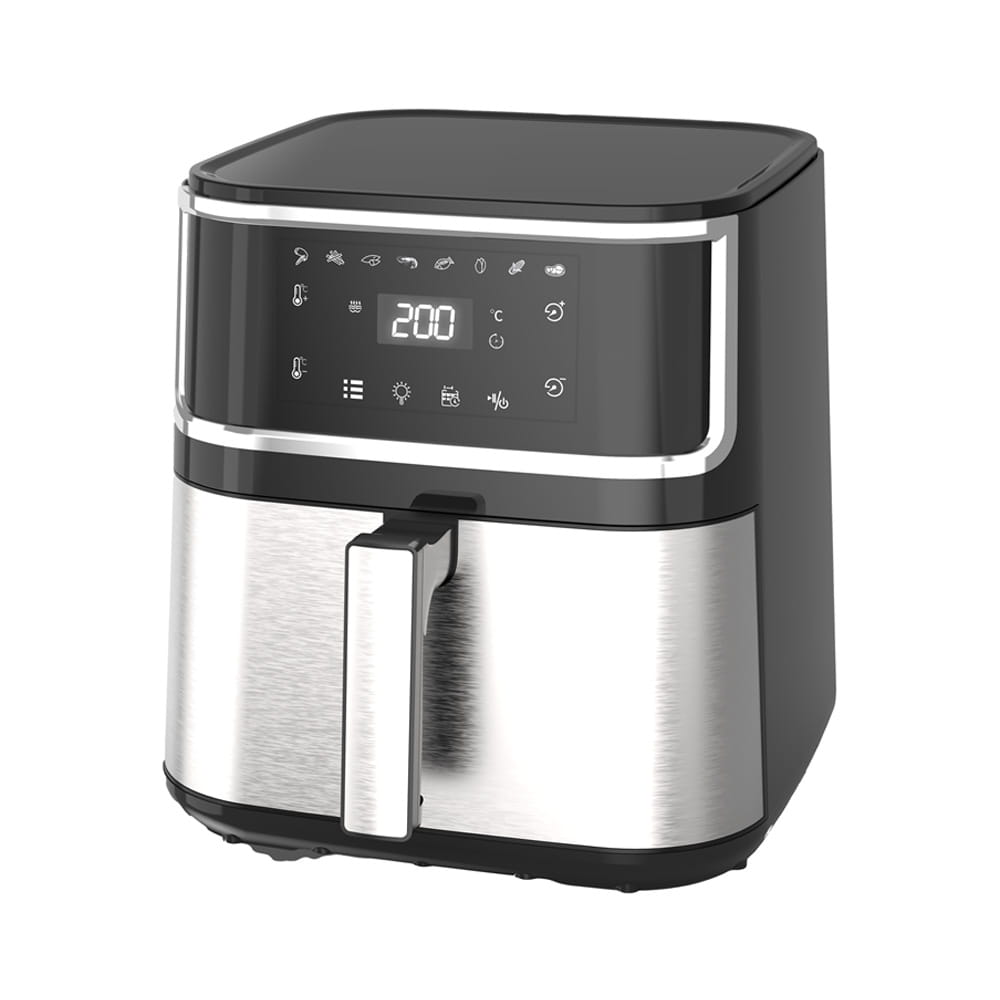Cavity Geometry and Thermal Concentration
The key difference between a stainless steel air fryer and a traditional oven lies in its ultra-compact interior. This design is no accident; it's based on sophisticated computational fluid dynamics (CFD) analysis. Professional interiors typically feature a parabolic or conical bottom structure, rather than a simple straight cylinder or cube.
The primary purpose of this geometric design is to direct airflow. Hot air, driven by a high-speed fan at the top, is forced downward and compressed. When it reaches the conical bottom, it quickly rebounds and disperses along the inner wall. The smooth, mirror-like surface of the stainless steel interior further enhances radiant heat transfer, ensuring efficient and concentrated heat delivery to the food surface. This structure maximizes the convective heat transfer coefficient, which is key to rapid food dehydration and a crispy crust. The precise matching of chamber volume and heating power is the engineering foundation for ensuring professional-grade hot air velocity.
Core Driver: High-Performance Fan and Heating Element Layout
The hot air circulation efficiency of the Stainless Steel Air Fryer is determined by the integrated design of its core components: the high-speed turbine fan and heating element.
The fan is typically located at the top center of the chamber and is driven by a high-temperature-resistant, long-life BLDC motor to ensure sustained high speed and high air flow. The fan blades' airfoil profile is optimized to generate maximum static pressure while minimizing noise and energy consumption, overcoming the drag of the frying basket.
The heating element is arranged in a circular or spiral pattern below the fan. This arrangement allows the incoming air to be instantly heated to the set temperature before it circulates. Professional design requires the heating element to have an appropriate power density to avoid localized hot spots while ensuring instantaneous stability of the hot air temperature. The high thermal stability of the stainless steel housing provides a reliable operating environment for this integrated heat source.
Airflow Guidance and Drag Minimization
The hot air flow path within the fryer requires precise control to achieve 360-degree three-dimensional heating. This is primarily achieved through the airflow guiding structure and fryer basket design.
Professional air fryers feature sophisticated air baffles or diffusers above and around the fryer basket. These structures evenly distribute the high-speed hot air from the fan and propel it toward the sides of the frying basket. The hot air doesn't directly impact the top surface of the food, but rather envelops the entire food.
The design of the stainless steel basket is crucial. The perforation rate, hole size, and arrangement of the bottom and side walls are meticulously calculated to balance air resistance and heat penetration. The ideal design allows hot air to efficiently penetrate the stacked layers of food while minimizing pressure loss. This maintains the hot air's velocity and kinetic energy, ensuring that even food at the bottom of the basket receives sufficient heat, effectively preventing undercooking.
Closed-Loop High-Efficiency Circulation and Thermal Energy Management
The stainless steel air fryer's specialized hot air circulation system utilizes a high-efficiency closed-loop circulation system.
Intake: The fan draws air in from the top center of the frying chamber.
Heating: Air flows through the heating element, rapidly raising its temperature.
Jetting: High-velocity hot air is directed toward the fryer basket and food.
Recirculation: The key lies in the recirculation path. After heating and dehydrating the food, the hot air rises through the narrow gap between the fryer cavity and the fryer basket, avoiding direct contact with the outer shell and heat loss, and is then re-drawn by the fan.

 English
English Español
Español